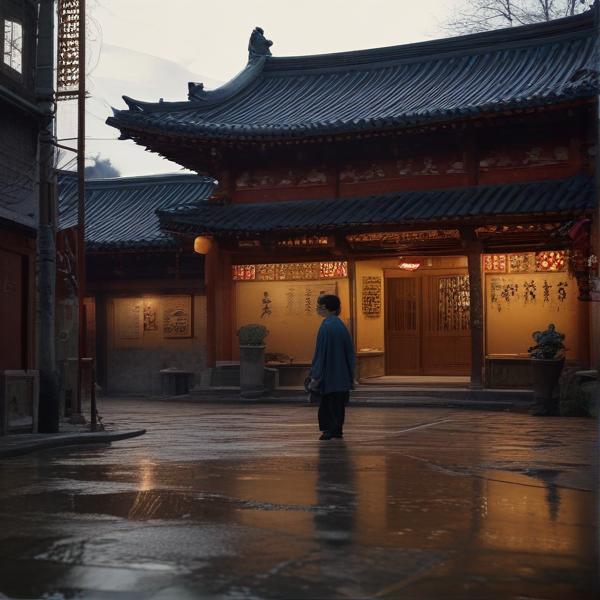基本信息 (Basic Information)
含义与用法 (Meanings & Usage)
中文核心释义 (Core Chinese Meaning): 美丽,好看,漂亮。
英文核心释义 (Core English Meaning): beautiful, pretty, elegant
象形意义 / 为何这么写 (Pictographic Meaning / Writing Rationale)
文言文释义 (Classical Chinese Meaning)
深入学习 (In-depth Study)
字源故事 (Origin Story)
字形演变 (Character Evolution)
常用词语和例句 (Common Words & Examples)
美丽 (beautiful)
她有一双美丽的眼睛。
Eng: She has beautiful eyes.
秀丽 (elegant; graceful)
这里的山水风景非常秀丽。
Eng: The landscape here is very graceful.
华丽 (gorgeous; splendid)
她穿着一件华丽的礼服。
Eng: She is wearing a gorgeous dress.
相关成语 (Related Idioms)
美轮美奂
Meaning: magnificent and splendid
多语言翻译 (核心释义) (Translations (Core Meaning))
- French: beau, joli, magnifique
- German: schön, hübsch, elegant
- Spanish: hermoso, bello, bonito
- Italian: bello, elegante, grazioso
- Portuguese: belo, bonito, elegante
- Russian: красивый, прекрасный, изящный
- Arabic: جميل، أنيق
- Persian: زیبا، خوشسیما
- Dutch: mooi, prachtig, elegant
- Polish: piękny, ładny, elegancki
- Vietnamese: đẹp, xinh đẹp, lộng lẫy
- Ukrainian: гарний, прекрасний, елегантний
视频学习资源 (Video Learning Resources)
通过以下链接在热门视频网站搜索 "丽" 的更多讲解:
Search for more explanations of "丽" on popular video sites:
- 在 Bilibili.com 搜索 "丽 字源 说文解字" (Search on Bilibili)
- 在 YouTube.com 搜索 "丽 character origin etymology" (Search on YouTube)
网络参考 (Web References for "丽") ()
网络内容摘要 (Web Content Summary):
“丽”字核心含义与象形起源:“丽”字最早见于甲骨文,是象形字,字形像鹿的头顶长着一对优美的鹿角。本义为“成对的美丽鹿角”,引申为“美丽、漂亮”。“丽”的古形为“麗”,后来简化为“丽”。 Core meaning & origin: The character “丽” (traditional: 麗) originated as a pictograph in oracle-bone script, depicting a deer’s head with beautiful paired antlers. Its primary meaning was “beautiful paired antlers” and by extension, “beautiful, pretty”.
- 有趣文化背景:古代字形展示鹿角的成对之美,被用来引申表示“美丽”,“华丽”。 Cultural note: The ancient form highlights the elegance of paired deer antlers, a metaphor for beauty and grace in classical Chinese culture.
- 常见用法:“丽”常用于表示美丽、漂亮,如“美丽”、“艳丽”、“秀丽”。 Common usage: Frequently found in words describing “beauty”, such as 美丽 (beautiful), 艳丽 (gorgeous), 秀丽 (graceful).
- 易混淆点:“丽”与“力”(lì,意为“strength”)外形相近,但意义完全不同;“丽”为美,“力”为力气。 Easily confused: Don’t confuse “丽” (lì, beautiful) with “力” (lì, strength), which look similar but have different meanings.
- 常用成语或搭配:如“靓丽”(bright and beautiful)、“秀丽山川”(beautiful scenery)。 Common idioms/collocations: For example, 靓丽 (brightly beautiful), 秀丽山川 (beautiful landscapes).
补充说明: “丽”还可以作为人名使用,常见于女性名字中,寓意美丽。 Additional note: “丽” is also common in female given names, symbolizing beauty.
丽的解释|丽的意思|汉典"丽"字的基本解释 - 漢典
"丽"字的解释,释义,异体字,音韵方言,部首笔画,康熙字典,说文解字,字源字形 ... 其字本作"丽",后加"鹿",成为形声字。鹿形丽声,鹿成对,并驾。本义:成群;结伴;成对) (2) 成对。
汉字"丽"的起源、演变过程-汉字字源辞典
麗 ,甲骨文 是象形字,字形像鹿 头上长着一对鹿角 。 有的甲骨文 将鹿角 写成 ,在 " 夕 " (肉,器官、组织)上加一横指事符号 ,表示 为特殊的器官。 金文 承续甲骨文字形。 篆文 有所变形,将金文字形 中的鹿角 写成 " 丽" 。 造字本义:名词,长在鹿头上成对的漂亮鹿角 。
更多图片 (丽 More Images) ()
